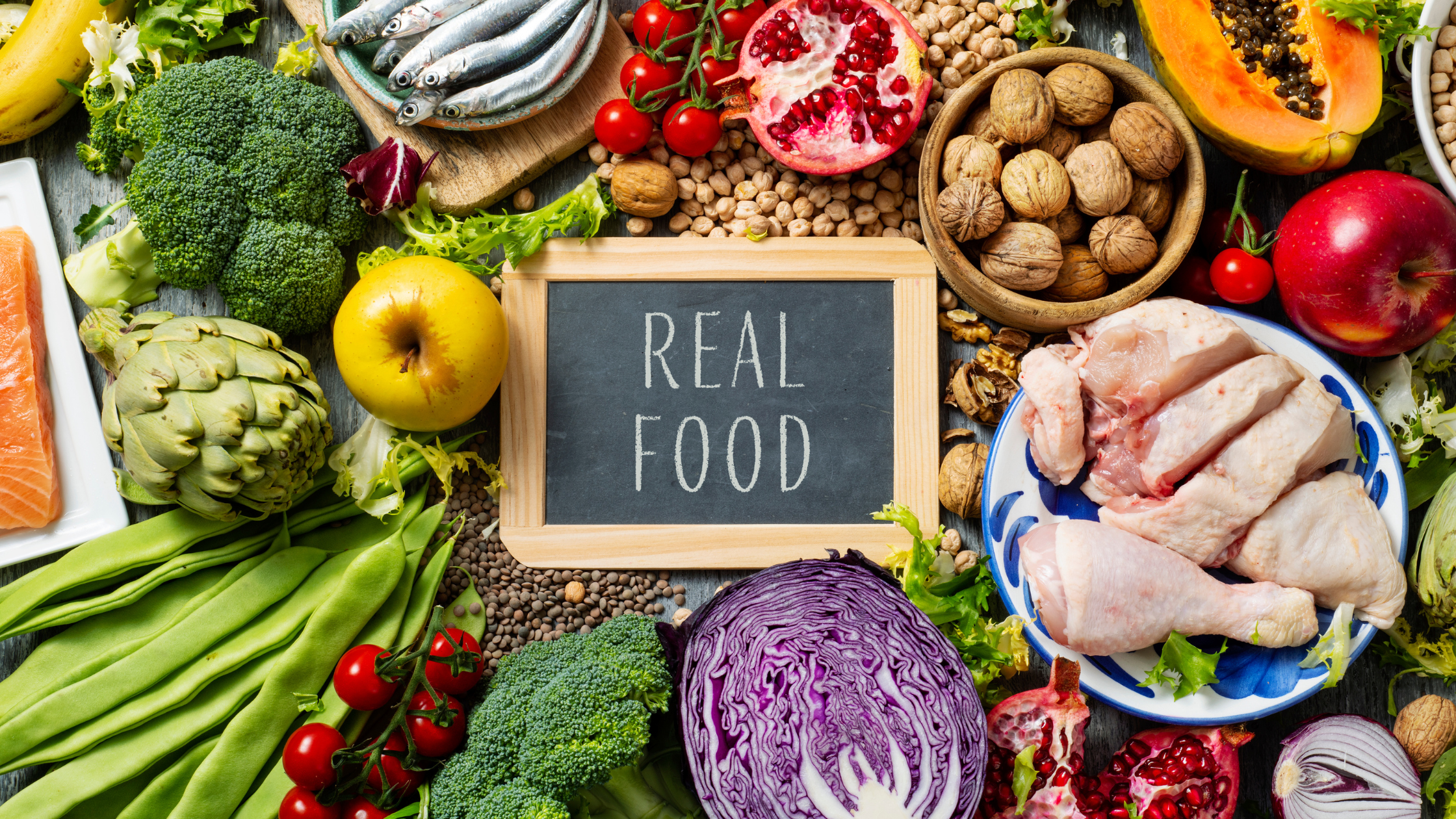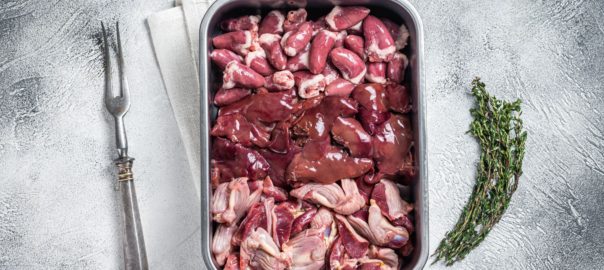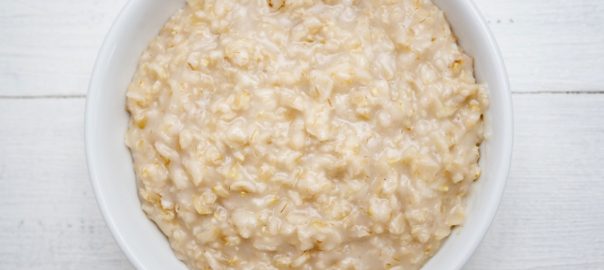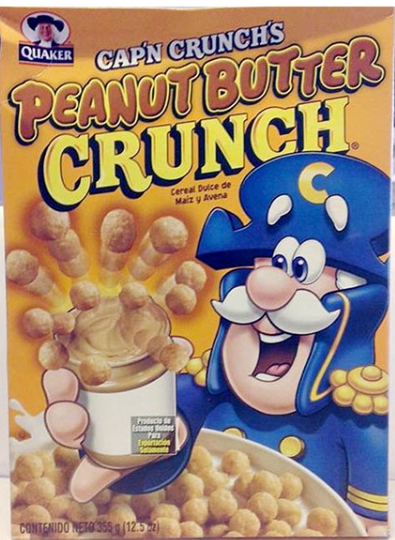
Tag Archives: whole food


What It Means To Eat Like A Human
There is such an overwhelming number of diets out there these days, all claiming to be THE BEST diet that everyone should be following; telling you what foods you should be eating; telling you what to do and when to do it, making it nearly impossible for anyone to really know which diet is actually right for them.
But the bigger issue here, in my opinion, is that none of them seem to be getting to the root of the matter - how we should be eating in order to nourish our bodies.
This begs the question: What are we NOT doing as humans that we should be in order to truly nourish our bodies?
Sure, there are many great conversations these days about what we should be eating, about sourcing high quality seasonal ingredients, pasture-raised meat, and milk from grass-fed cows…
Don’t get me wrong, all of these things are very important!
But there’s another piece of the conversation that seems to be missing—what to do with those raw materials before we put them in our mouths to ensure they’re as safe and nourishing as they can be.
We should be questioning how we feed ourselves and our loved ones... And a very good place to start is to go back to the past.
Now, I’m not saying to go back to exactly how we did things millions of years ago, but we can look at how we approached food in the past (because that’s the diet that literally built the foundation of our bodies and brains) and then formulate it such a way that it applies to today.
How we approached food in the past
Let’s go back 3 or so million years ago when our ancestors were eating only what they could find in their environment. They were designed to get the raw materials they found and process them internally to the best of their ability in order to nourish the bodies and brains that they had.
We’re talking about no technology here whatsoever! They were eating a limited amount of local, seasonal fruits and vegetables—and bugs.
As time passed, they began creating tools for scavenging meat from carcasses that had been killed by another predator - and by doing that, they introduced meat into their diet.
Here’s the best part, and quite possibly one of the most profound moments in our ancestral dietary past, after they got the taste for meat, they started hunting. And let me tell you, there’s a HUGE difference between hunting and scavenging!
Now they were able to have first dibs on whatever part of the animal they wanted to consume. They were able to get the blood and the fat in the organs - and that is where the most nutrient dense bioavailable parts of the animal are. You don’t have to even cook it!
Sure, they were eating the meat too, but it was when the blood and fat in the organs were introduced to our diets that really made the difference because it supported massive body and brain growth, and eventually led to who we are today.
That’s just one example of why stepping back in time is beneficial to understanding our dietary path.
The truth about fats
Society has been telling us that fat is really bad for us for a long time, but the truth is our bodies need fat. Yes, the meaty parts are super yummy, but it’s the fat and the blood that holds the most nutritional value.
Look, I am well aware that the thought of eating organ meats may not sound very appetizing to everyone - but we obviously need to properly nourish our bodies and support ourselves by making sure we are getting the things we need that are the best for us.
Following a healthy, nourishing diet on a regular basis can be hugely transformative.
That’s not to say that if you eat a sugary treat every once in a while that you should be kicked out of the club - but it’s important not to make it a habit to take a cheat day… Instead, have a cheat meal and then get back to your focused and intentional diet.
Let’s talk about how we eat…
First we have our biological nutritional needs, which these days, can really only be met by using technologies that allow us to get nutrients from our environment and transform them into the safest and most nourishing form.
Then we have the other part of eating like a human—we are all emotional eaters.
It’s true! Food is wrapped in everything we are, how we see the world around us, and even how we see ourselves—it’s part of our identity.
Whether it’s family traditions, socioeconomic status, politics, where you live in the world, or what age you are, you convey all of those things to the world every time you take a bite of food.
These things play a very intricate role in how we get our food, how we cook our food, and how we eat our food. You can’t separate these things, you can’t just ignore this emotional side of eating and only eat for your biological nutritional needs. It simply won’t work.
The goal is to get up from the table after finishing your meal and feel better than when you sat down. That’s what real nourishment is all about. Not overstuffed like it’s thanksgiving, not still hungry, just simply satiated and nourished.
And when you really think about it, everything about the meal should have felt nourished. Were there a lot of good conversations around the table? Did everyone sit around for too long?
Everything plays a role in being truly nourished - and if that’s your goal, then health and living your best life will follow.
The Pantry Principle
It is my hope to inspire you to learn about the foods you are eating and making for your family - to learn the basic principles for going to the grocery store and understanding what you’re actually buying.
Never stop learning because it is the foundation behind eating to nourish your body.
Sure, in an ideal world everyone would learn how real, nourishing food is made and make it all from scratch. But even if you don’t learn how to do that - you can learn how to go to the grocery store and buy the foods that you know are genuinely made in a traditional nourishing way.
That's really the key to being immune to flashy advertisements and gimmicks while you walk down the grocery store aisles.
Then you can feel confident knowing that you’re getting the best and most nourishing products to feed yourself and your loved ones, and you’re using your hard earned money to support the food producers that are actually doing their best job.

Real Food – Part One
This is a guest post by Alex Clark who ran the blog A Moderate Life. She's decided, after blogging since March 2010, to stop writing about real food. Mostly because she so busy living her real life. She's given permission to share this wonderful story. I fully sympathize with her childhood outlook having dreamed of canned spaghetti and ding dongs when I was a kid. Although the posts are from April 2010, the information is still timely and relevant.
Celebrating the Legacy of Traditional Cooking: A Tribute to My Mom's Nourishing Meals
What a lovely Saturday it is! Not because its beautiful out, but because we are home relaxing after a busy work week–and that sounds good to me! I was at the grocery store the other day looking for things that I wasn’t finding and getting very frustrated that I was even trying as I knew this stuff wasn’t going to be there. No raw dairy, no full fat organic yogurt, no fertile eggs, no grassfed butter, no organ meats, no artisan bread, no Scottish porridge oats…I know..complain, complain, complain…and then, I saw some liverwurst and I got happy for a moment–ah, offal!!
As I smiled, a wave of guilt came over me so strongly that I almost cried, and I had this HUGE AHA moment! For years I had been complaining to people that my mother had fed us terribly when I was a child. Not that she was a bad cook, but she was just different than all the other American Moms out there. That’s pretty obvious because my mother is from England and grew up in the Yorkshire and Leicestershire countryside. As a young woman, she was a midwife, going from home to home delivering babies and caring for the mothers and babies in the home. She came to America and met my dad, a Greek surgeon, who came from (oh god, thats another huge long story–let’s save it for another time shall we?) China at a party in Brooklyn. Thus our family was born and moved into the American landscape as a couple raising first generation American children in the mid 60′s.
 So, when other kids were eating Captain Crunch for breakfast, we were having porridge with treackle, or crepes rolled up with lemon and sugar, instead of flap jacks. When other kids were eating Oscar Meyer and Wonderbread, we were eating liverwurst and lettuce with butter sandwiches or cream cheese and lettuce on brown bread.
So, when other kids were eating Captain Crunch for breakfast, we were having porridge with treackle, or crepes rolled up with lemon and sugar, instead of flap jacks. When other kids were eating Oscar Meyer and Wonderbread, we were eating liverwurst and lettuce with butter sandwiches or cream cheese and lettuce on brown bread.
As kids, we envied our peers their white bread, their big glasses of pasteurized and homogenized milk at every meal (we had water only or a taste of wine, or a shandy, beer and ginger mixed–remember my folks were from Europe!), oh and the thought of Hellmann’s Mayo on a sandwich instead of that GAWD AWFUL butter on everything!!!
Dinner, occasionally, was a child’s worst nightmare. While our friends were eating Kraft Macaroni and Cheese with Ball Park Franks, we were having Beef and Kidney Stew, long cooked with potatoes. Or we would watch our dad crack open a lamb shank that my mother had braised for hours and drink out the marrow with a satisfied slurp.
Snails crossed our plates, tripe, the crackling off a fresh leg of pork, eggs and bacon with bread fried in the grease, Brussels sprouts, turnips, rutabagas…all made an appearance, and while we ate them, simply cooked in my mother’s kitchen, with my granny sitting by her side preparing the veggies, we longed for the dinners our friends were eating.
We did this because we thought it would be better to fit in…to assimilate…to eat what they were eating meant we were one of them. I remember sitting in terror and dread the first time my mom let me have a birthday sleep over and she served spaghetti and meat sauce…everyone loved it! I was so concerned because it wasn’t Ragu!!!
As the years have gone by, and I have explored many eating traditions and nutritional directives, I sometimes used my mother’s cooking as a “poor me” to fit in and explain myself better and why I was still searching.
People gasped at my stories of my mother buying beef hearts and having them ground by the local butcher or my grandmother buying cows gristles and ligaments and slow cooking them to release all the gelatin and collagen. It was unheard of, it was unknown and it was unwanted. Surely McDonald’s was better.
Now, sitting in my kitchen, with a pantry stocked full of home made, organic foods based almost entirely on Real Whole Foods recommended by Sally Fallon and the Weston A. Price Foundation, I realize that my mother was RIGHT–she fed us good, wholesome, nourishing, frugal, building, traditional foods! She set the building blocks for future health in every bite of liver and every piece of rye bread we ate!
I am lucky because my kids already know that what my friends grew up on is not good for them, and they love to eat the way we eat (though, they have yet to have a piece of tripe or a lamb shank!). Over the years, my mother stopped cooking traditional foods and became an excellent cook with a European flair. She and my dad are in their golden years and are healthy and happy and travel extensively. They are concerned with health and wellbeing, but I do think I need to sit down with them and explain why kidneys need to be back on the menu!
Here’s to my Mom, and the wonderful food she made me eat as a kid–I am now glad she made me, ’cause I know how deep down good it was for me.

